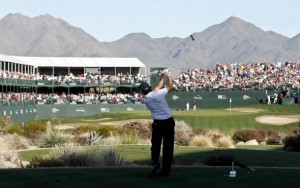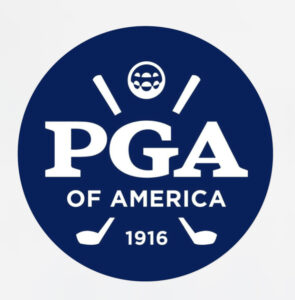
Phil Mickelson’s win yesterday at the Waste Management Open in Phoenix was an impressive display of solid driving, trajectory control with his irons, and putting. It all added up to an incredible 28 under par that was just behind the Tour scoring record. But what struck me was how Phil seemed to have a great game plan for HIM and worked with his caddie to stay with it regardless of the situation, and how he immersed himself in his pre-shot routine every time to stay with that game plan.
This is a key area of the game that not only doesn’t necessarily get taught by instructors but is rarely thought out by most amateurs. A solid game plan when playing a course can be your “safety net” that, along with a solid routine, can lead to better scores and less apprehension. It’s critical for every player to go through a few key steps when playing a round of golf to get the most out of their game.
First, be honest and assess where your game is at that moment. If you are playing well then perhaps your game plan can be a bit more aggressive, knowing that your swing is on point and your short game is sharp. But what happens when you don’t have your “A” game? Are you willing to adjust your game plan and get the score you want by grinding it out and playing more conservatively? It’s a question that many players don’t want to answer honestly, but that can have a huge impact on your game. Be honest with yourself and adjust your game plan based on your game that day – if you just can’t get rid of that slice then line up on the right side of the tee box and go with it, or use a 3 wood to get in the fairway. Don’t let your ego get in the way of the true end game (besides having fun): scoring. Mickelson kept to his game plan even when he had a 4 shot lead coming into the last 2 holes. On 17, he hit a 3 wood to put the ball in play, and while it almost went in the water it stayed in play and he made birdie; a more aggressive approach certainly would have brought the trouble into play. Then on 18, with water lurking all the way down the hole, Mickelson never wavered; he pulled the driver and got aggressive. Some may have questioned this, but he knew the yardages and knew that a good swing with the driver would fly right over the water and never bring it into play. A lay up attempt would bring a big number on the scorecard into play and possibly cost him the Phoenix Open.
Additionally, a good pre-shot routine is a must. Dr. Bob Rotella, noted sports psychologist to many PGA Tour players over the years, advocates a sound pre-shot routine as a way to calm yourself and get into a focused mindset before hitting a shot. It eliminates anxiety because it feels familiar, thus allowing you to focus on the target and not anything else. I couldn’t agree more with his work on this, and try to work with my student’s to find a way that is comfortable, repeatable, and at the right pace to set up to a golf shot. Phil Mickelson seems to be very much into visualization, as he would stand behind his ball, make a few practice swings, then stop and look back and forth between the ball and the target for a few moments, really focusing his eyes on the shot to come. Then, he would go right into his set up with no hesitation, get comfortable, look, and go. One thing to notice is that it has a great rhythm that doesn’t ever change from club to club. He never gets away from it, and never adjusts. If he doesn’t feel good over it he steps away and starts over with visualizing the target again.
This is not to advocate Mickelson’s pre-shot routine as the one to use for you – it’s to show that everyone has a routine that works for them and they have to find it. I would however say that most players have a tendency to take too long and stare at the ball too long. Good players do 3 main things in a pre-shot routine: they stick to it, they stay fluid, and the stare at the target and not the ball. This allows them to swing freely and execute their game plan without hesitation. Most amateurs change from shot to shot, get very stationary, and stare at the ball. Then they are forced to swing in conscious mode rather than subconscious mode as Dr. Rotella recommends.
So the next time you go to the range to work on your game, work on some actual “game time” shots where you work on your pre-shot routine. Get it down cold and focus on the target. Then, when you go play, honestly assess your game. It doesn’t have to be pretty – it just has to work to get the ball in the hole. Tell yourself you are going to trust your routine, have fun, and stick to your plan no matter what. If a change needs to be made due to what the course or weather is giving you then do it – knowing that you made an educated and necessary change and it was thought out. Then just make a swing and let it go and play the game – your scores will benefit.



